Wreck Thursday - The Funnels
On Tuesday, we took a look at Titanic’s four majestic funnels, their design, and the way all four of them provided ventilation to various spaces throughout the ship, from the boiler rooms to the galleys and beyond.
During the sinking, Titanic’s funnels collapsed, either sinking on their own or being pulled down by the wreck itself. The collapse of the first funnel, depicted in countless films, was a key moment in the ship’s final plunge.
But what happened next? Titanic’s funnels, along with her masts and rigging, were among the items that originally concerned the team lead by Robert Ballard and Jean-Louis Michel when they decided to use the towed sled Argo to film the wreck once it was discovered in 1985. If Argo had been too close to the decks, it might collide with the ship’s funnels or get stuck in the rigging. Fortunately for the explorers, the funnels were nowhere to be found and the ship’s masts had both collapsed.
The funnels, made of relatively thin metal, had not survived intact. Instead, the pressure of the ocean had flattened them down, and much of their metal had corroded into barely-recognizable forms. Due to the extensive mapping of the wreck and the debris field, however, what remains of the funnels, not to mention to tubing, whistles, and ladders that once adorned them, has been found, photographed, and, in some cases, recovered.
Let’s now take a tour of the images to see what remains of these once-beautiful and iconic funnels.
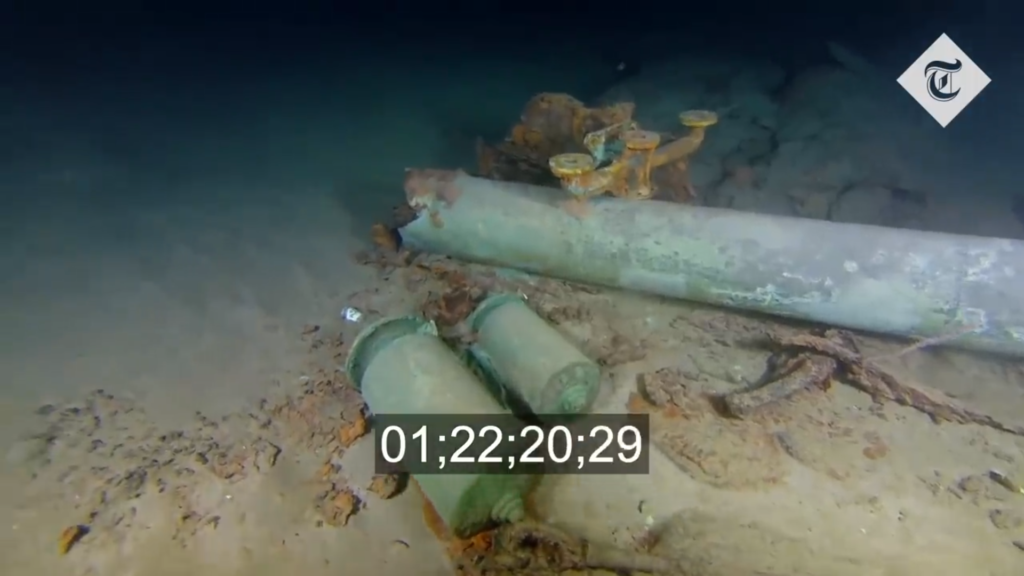
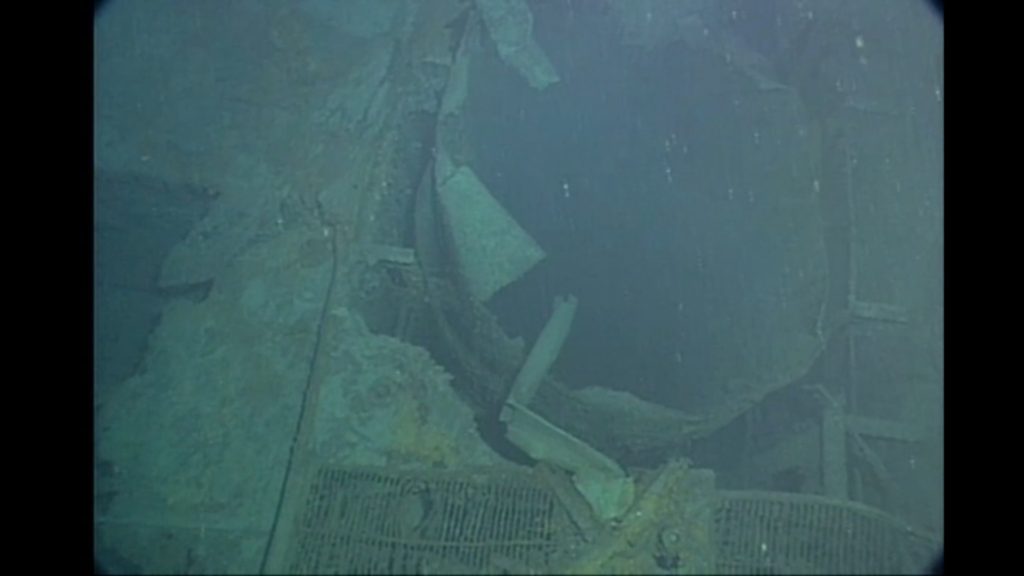
First, in a 2001 image, we see the remains of one of the steam pipes that had allowed for an emergency release of steam pressure. This would’ve been on the forward or aft part of one of the funnels. Perhaps more interesting, however, are the remains of one set of Titanic’s working whistles. A set of the ship’s whistles were recovered in 1993 by RMS Titanic Incorporated (RMSTI). We will discuss these in a future post.
In the next image, from 2003, we can see the gaping hole where the first funnel once stood. The violence with which this funnel collapsed during the sinking is evident from the torn remains of the stack in the center of the image, as well as the twisted piping near the bottom of the image.
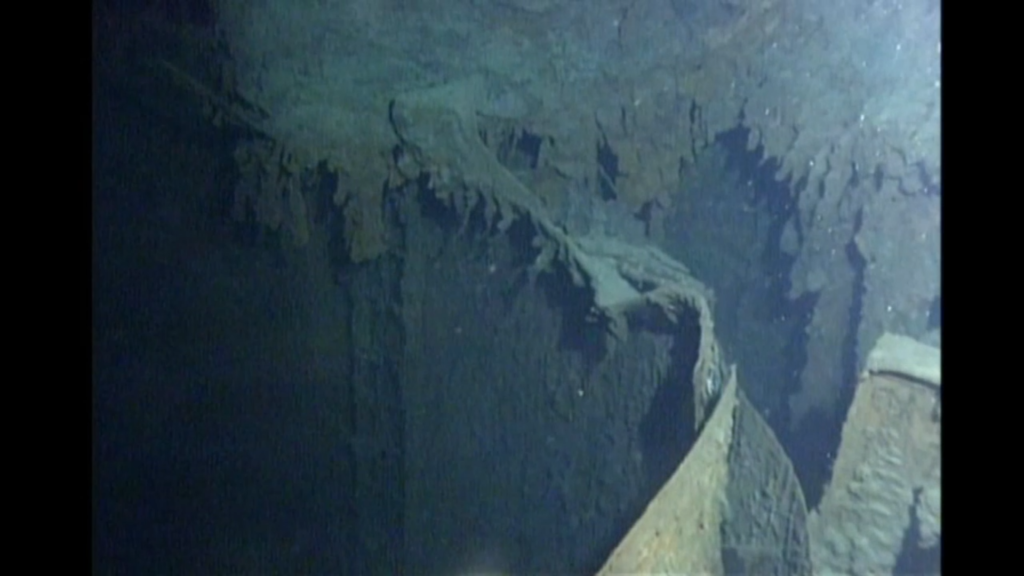
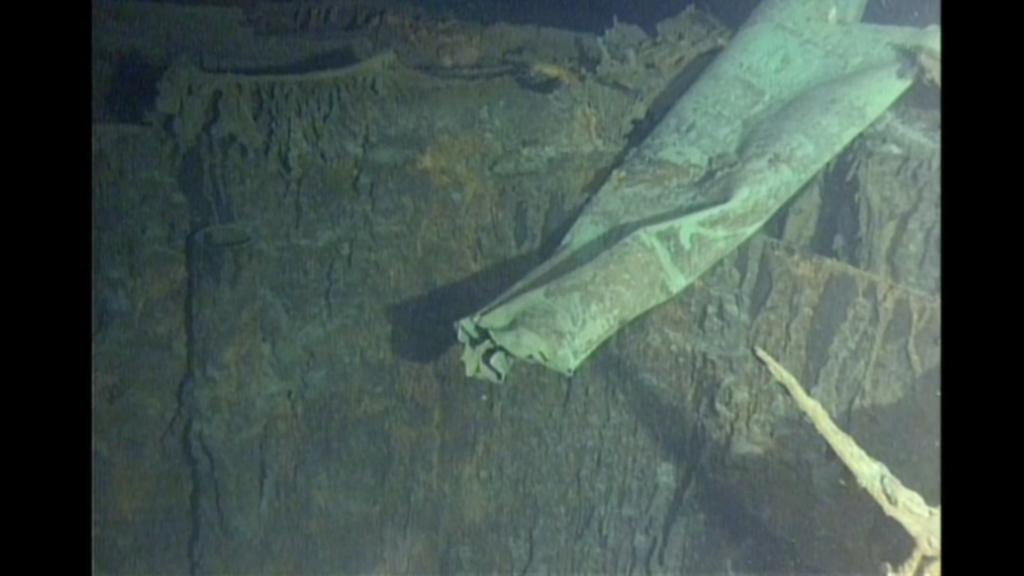
Hauntingly in the third image, also from 2003, we can see one of the escape ladders inside the uptake for the first funnel. Available as a pathway for personnel from the ship’s boiler rooms to escape to the upper decks in an emergency, we’re left to wonder if this ladder provided salvation for any of the few who escaped the ship’s lowest decks.
In the fourth image, again from 2003, we can see a close-up of the twisted and broken steam pipe from the second image. This is even more evidence of the way in which the first funnel fell into the sea.
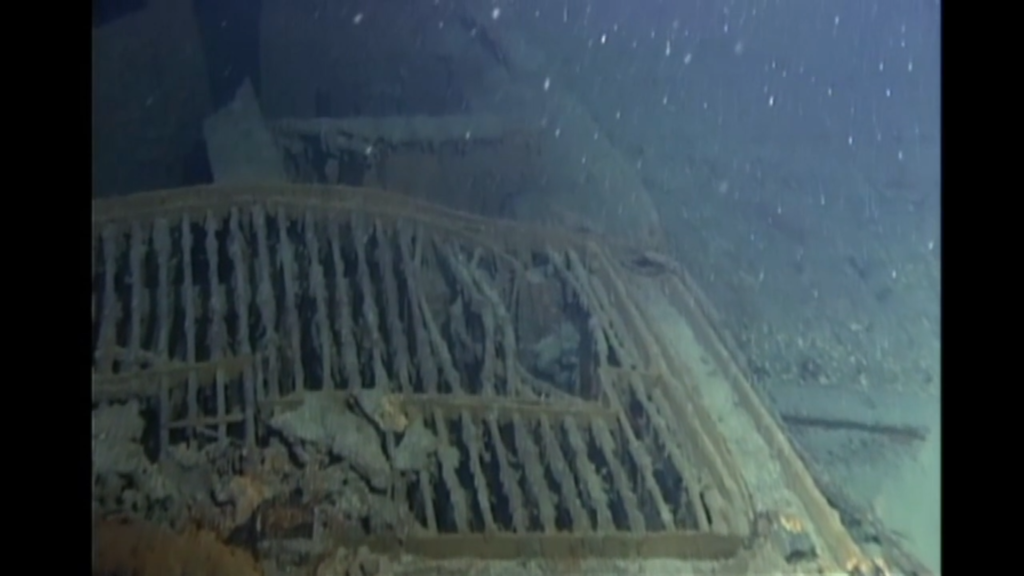
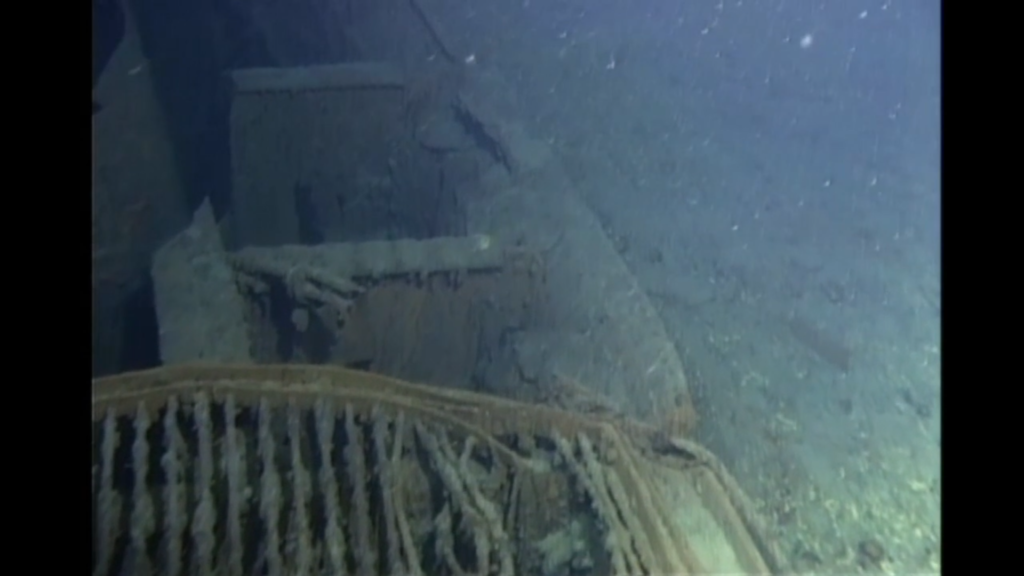
In the fifth and sixth images, we’re still looking at the area around the first funnel, this time at the space just in front of it. The grate in the foreground covers the Fidley trunk. This open space forward of the stack would’ve provided ventilation to the boiler room below, as well as having space for the escape ladders we mentioned earlier.
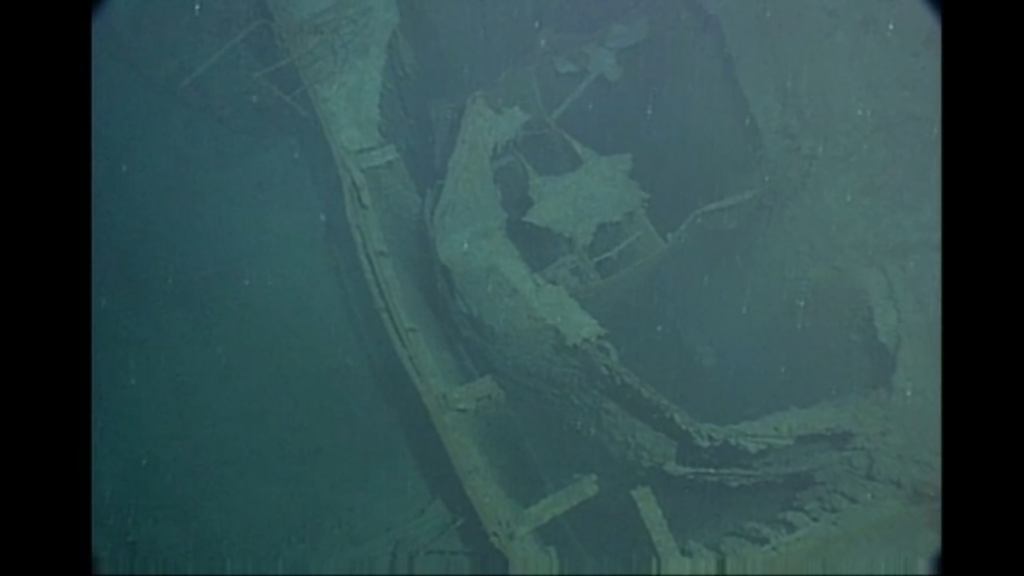
In the seventh image, we’ve moved aft to the crumbled remains of the base of the second funnel. Here, we get some idea of the subdivision within the funnel itself that was mentioned on Tuesday.
Other, smaller pieces of the funnels have been found in the debris field around the wreck, including flattened remains of the funnels themselves and much of the piping that was once visible on the aft side of the third funnel. As new images come to light and are analyzed, we will hopefully be able to continue to piece together the final journey and status of what were once the ship’s most recognizable external feature.
Content: Nick Dewitt
Images:
2001 Telegraph
2003 NOAA
2010 NOAA
The footage above was released from the 2022 dive (Oceangate) by CBS in November of 2022.

